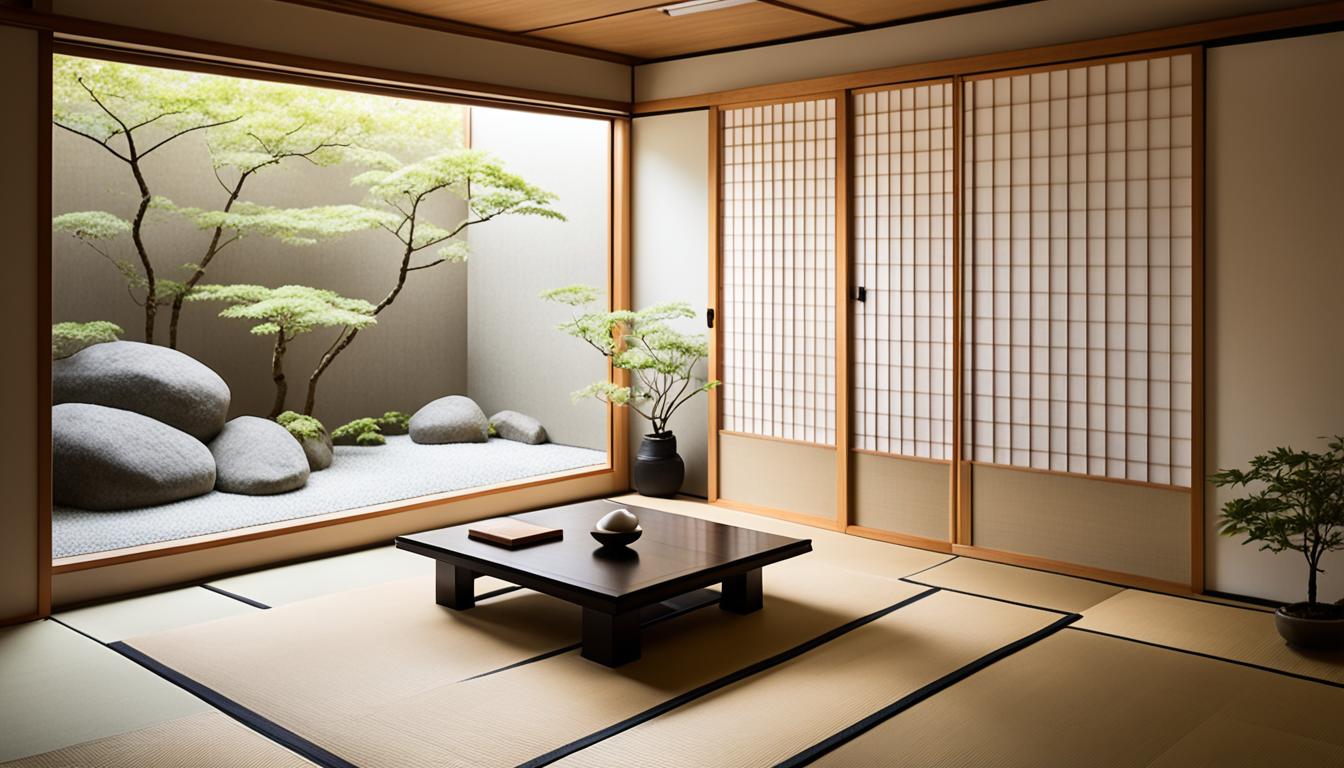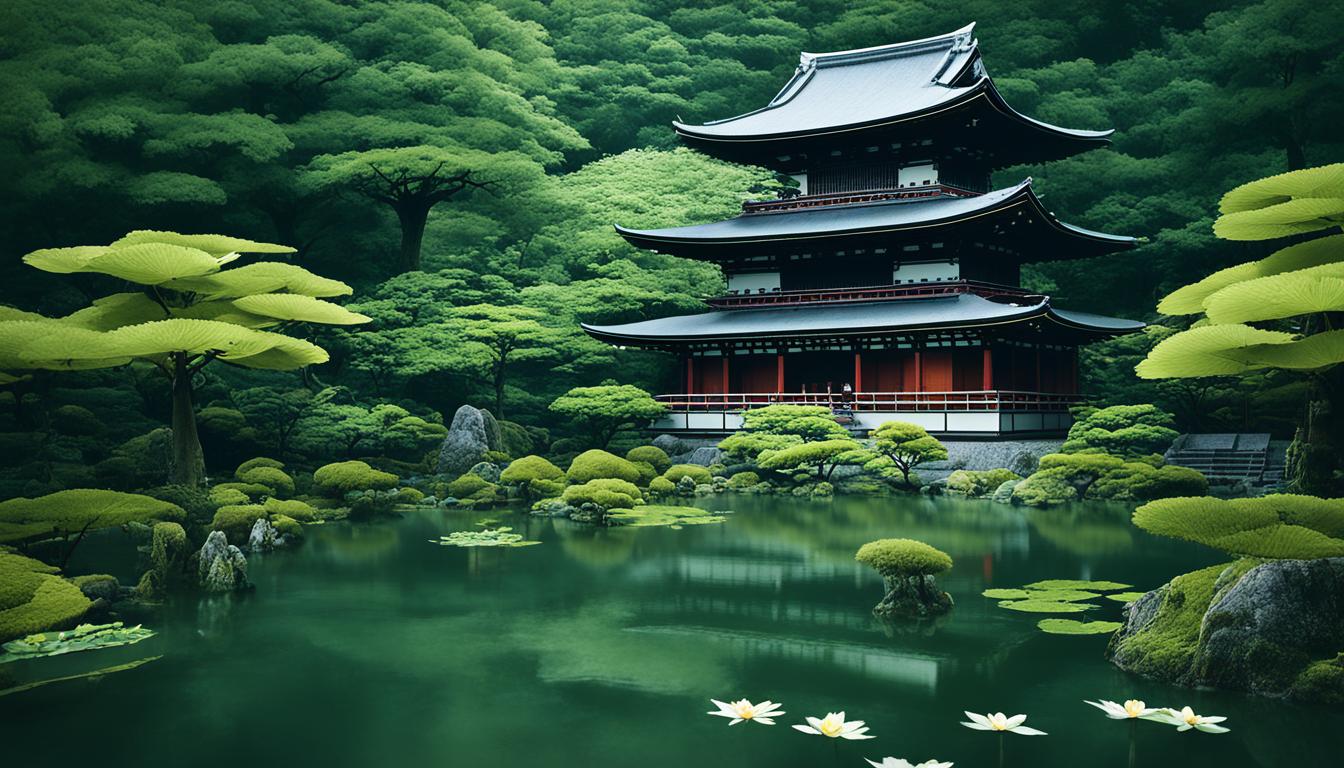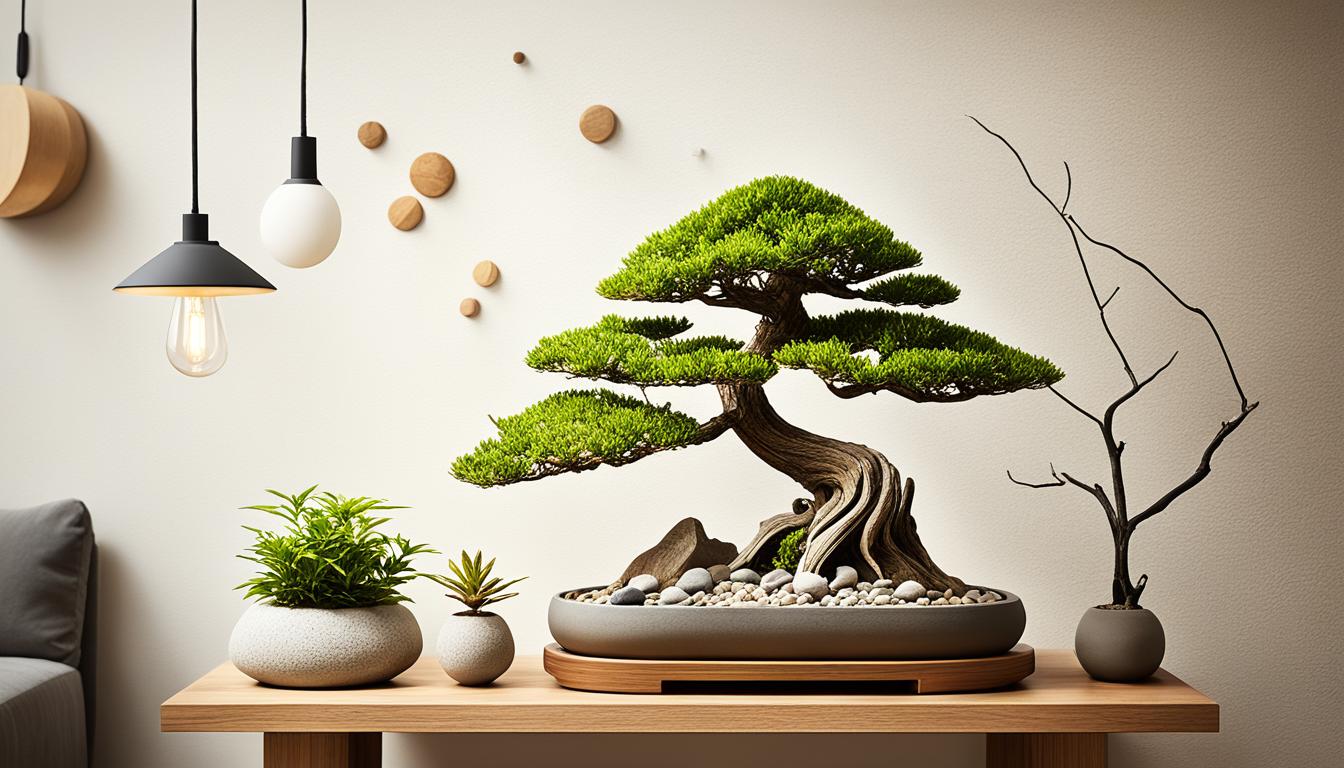🤍 Unmatched Quality, Authentic Craftsmanship
🤍 Unmatched Quality, Authentic Craftsmanship
🤍 Unmatched Quality, Authentic Craftsmanship
Feng shui is a well-known practice in the Western world, but does Japan have its own equivalent?
In this article, we will explore whether there is a Japanese equivalent to feng shui and delve into the cultural and historical influences that shape Japanese spatial harmony.
Join us on this journey as we uncover the secrets of Japanese design and philosophy.

To truly understand if there is a Japanese equivalent to feng shui, we must first grasp the roots and global influence of this ancient practice.
First, we will explore the philosophy behind feng shui, which focuses on balancing the energies of one's environment.
Then, we will examine how feng shui has expanded from Eastern to Western cultures, influencing modern design and lifestyle choices around the world.
The philosophy of feng shui revolves around the belief that the arrangement and orientation of objects in a space can affect the flow of energy, or chi.
By creating a harmonious and balanced environment, it is believed that one can enhance various aspects of life, including health, wealth, and relationships.
In recent decades, feng shui has gained popularity beyond its traditional Eastern origins.
As people around the world become more interested in holistic well-being and the connection between the physical environment and mental health, feng shui has found its way into Western cultures.
The global influence of feng shui can be seen in various fields, ranging from interior design and architecture to personal development and business practices.
Many individuals and companies now consult feng shui experts when designing spaces or making important decisions to ensure harmony and positive energy flow.
As feng shui continues to shape the way we interact with our surroundings, it demonstrates the timeless appeal of its principles and the universal need for balance and harmony in our lives.
In this section, we will finally answer the question: Is there a Japanese equivalent to feng shui?
We will introduce the Japanese practice called fusui, also known as wind-water, and explore its unique history and cultural significance in Japan.
By understanding fusui, we can uncover the similarities and differences between Japanese spatial harmony and traditional feng shui.

Fusui, which translates to wind-water in English, is the term commonly associated with the Japanese equivalent to feng shui.
While feng shui originates from ancient China, fusui developed and evolved within the cultural context of Japan.
Similar to feng shui, fusui is based on the belief that the arrangement and flow of energy in the environment can impact one's well-being and harmony.
The practice of fusui emphasizes the balance of natural elements, such as wind and water, to create harmonious living spaces.
It incorporates the principles of yin and yang, as well as the five elements—wood, fire, earth, metal, and water.
By understanding the interplay of these elements and their impact on energy flow, practitioners of fusui aim to create environments that support positive energy and well-being.
While fusui shares some similarities with traditional feng shui, it also has its own unique characteristics and cultural influences.
The Japanese concept of wabi-sabi, which embraces imperfection and the transient nature of life, often plays a significant role in fusui's approach to design and aesthetics.
Additionally, the integration of Shinto and Buddhist beliefs adds a spiritual dimension to the practice of fusui.
In the next section, we will delve deeper into the historical journey of fusui, tracing its evolution in Japan and exploring its cultural significance in modern Japanese society.
Join us as we uncover the rich traditions and principles that shape Japanese spatial harmony.
In Japanese design, kanso is an aesthetic concept that celebrates simplicity and mindfulness.
By embracing kanso in our spaces, we can create an environment that promotes calmness, tranquility, and a sense of well-being.
Inspired by Zen philosophy, kanso encourages us to strip away the unnecessary and focus on what truly brings harmony to our lives.
Kanso is rooted in Zen philosophy and encompasses several principles that define its essence.
The first principle is minimalism, where simplicity is key. By eliminating excess, we create visual clarity that allows our minds to relax and find peace.
The second principle is unobtrusiveness, where objects are purposefully designed to blend seamlessly with their surroundings.
This creates a harmonious flow and prevents distractions from disrupting the tranquility of our spaces.
The third principle is naturalness, which encourages the use of organic materials and designs inspired by nature.
This connection to the natural world fosters a sense of calm and grounding.
While kanso and feng shui share a focus on creating harmonious living spaces, they approach this goal from different perspectives.
Feng shui is a Chinese practice that emphasizes the placement and arrangement of objects to enhance the flow of energy, or "qi."
On the other hand, kanso places importance on simplicity, mindfulness, and the elimination of clutter to create a serene atmosphere.
In feng shui, objects are strategically positioned to maximize positive energy and minimize negative influences.
In kanso, the emphasis is on decluttering and removing unnecessary objects to create a sense of calm and freedom.
Both practices seek to create balance and harmony, but they do so using different methods.
Kanso also differs from feng shui in its approach to aesthetics. While feng shui considers the placement and arrangement of objects, kanso focuses on the overall simplicity and naturalness of design.
By prioritizing simplicity and mindfulness, kanso invites us to appreciate beauty in the absence of excess.
In summary, kanso is a Japanese design concept that celebrates simplicity and mindfulness.
Inspired by Zen philosophy, kanso encourages us to create spaces that are free from unnecessary clutter, allowing us to find peace and harmony in our surroundings.
While kanso and feng shui both seek to create balance and harmony, kanso's emphasis on simplicity sets it apart from the strategic placement approach of feng shui.
In this section, we will take a deep dive into the historical journey of fusui, the Japanese equivalent to feng shui.
We will trace its introduction from China to Japan and explore its evolution throughout Japanese history.
Additionally, we will examine the cultural significance of fusui in modern Japan and how it continues to shape Japanese design principles.
To understand the historical journey of fusui, we must first explore its introduction and evolution in Japanese history.
Fusui originated from the Chinese practice of feng shui and made its way to Japan during the Asuka period in the 6th century.
The Japanese initially adopted and adapted feng shui principles, incorporating them into their own cultural and spiritual beliefs.
Over the centuries, fusui evolved alongside Japanese society, intertwining with indigenous practices such as Shintoism and Buddhism.
It became an integral part of Japanese architecture, urban planning, and landscaping, as people sought to create harmonious environments that aligned with the natural world and spiritual energies.
In modern Japan, fusui continues to hold cultural significance and influence design principles.
Japanese cities are planned with consideration for the surrounding landscape and natural elements, reflecting the principles of fusui.
Traditional Japanese houses often feature elements such as tokonoma (alcoves) and engawa (verandas) that connect indoor and outdoor spaces, promoting a sense of harmony and balance.
Furthermore, fusui's cultural significance extends beyond physical spaces.
It plays a role in Japanese aesthetics, influencing the concept of ma (negative space) and the appreciation of subtle beauty.
Fusui's emphasis on flow and energy informs the arrangement of objects and the overall composition in traditional Japanese art forms, such as ikebana (flower arrangement) and tea ceremony.
Overall, the historical journey of fusui and its cultural significance highlight the deep-rooted connection between Japanese spirituality, nature, and design.
By exploring fusui's evolution and its impact on modern Japan, we can gain a better understanding of the unique approach to spatial harmony in Japanese culture.

Both feng shui and fusui incorporate the concept of the five elements, which play a crucial role in creating harmonious environments.
The five elements—wood, fire, earth, metal, and water—are believed to interact with each other and influence the balance and energy within a space.
In feng shui, each element represents different aspects of life and is associated with specific colors, shapes, and materials.
Their arrangement in a space is believed to have a significant impact on the flow of energy and overall well-being.
In Japanese geomancy, known as onmyodo, the five elements are also integral.
However, in this practice, they are referred to as gosechi and include wood, fire, earth, metal, and water, as well as additional elements such as sun and moon.
Japanese geomancy takes into account the orientation and positioning of the elements to harmonize with the natural surroundings and enhance the energy flow.
Wabi-sabi is a fundamental aesthetic concept in Japanese design that embraces imperfection and transience.
It is a philosophy that celebrates the beauty of things that are imperfect, impermanent, and incomplete.
In the world of Japanese design, wabi-sabi is not seen as a flaw, but rather as a reflection of the natural state of things.
Wabi-sabi encourages us to find beauty in the simple, the modest, and the unrefined.
It emphasizes the importance of mindfulness and appreciating the inherent character of objects.
In a society that often values perfection and precision, wabi-sabi offers a refreshing perspective that promotes a more humble and accepting mindset.
At the core of wabi-sabi is the acceptance of imperfection and the transient nature of life.
Unlike the pursuit of perfection and uniformity, wabi-sabi invites us to embrace the unique qualities of each object and recognize the beauty in their flaws.
Wabi-sabi encourages us to appreciate the passage of time and the natural processes of aging.
It acknowledges that everything is in a constant state of change and emphasizes the value of embracing the imperfect and imperfecting.

Wabi-sabi is not just a concept confined to the world of design; it influences various aspects of Japanese culture and lifestyle.
In contemporary Japanese living, it is reflected in the minimalist and uncluttered interiors, the use of natural materials, and the appreciation for handmade and traditional craftsmanship.
By integrating wabi-sabi principles into their living spaces, the Japanese create harmonious environments that promote tranquility, mindfulness, and a sense of connection to nature.
It encourages people to slow down, be present, and find beauty in the ordinary.
In today's fast-paced and technologically driven world, the wabi-sabi aesthetic offers a counterbalance, reminding us to prioritize the human experience and cultivate a deeper appreciation for the imperfect and the transient.
Incorporating kanso into your living space can bring a sense of tranquility and harmony to your home.
By embracing simplicity and mindfulness in design, you can create an environment that promotes peace and balance.
In this section, we will provide practical tips and steps for achieving zen in your home through the principles of kanso.
To achieve a harmonious and zen-like atmosphere, follow these practical steps for incorporating kanso into your home:
By following these practical steps, you can create a living space that promotes a sense of calm and serenity, aligning with the principles of kanso.
Both feng shui and kanso offer valuable insights and strategies for creating harmonious living spaces.
In this section, we will address modern living challenges and explore how the principles of feng shui and kanso can help overcome these challenges.
From enhancing productivity to promoting relaxation, we will uncover the practical applications of these design philosophies.
Creating a harmonious living space in today's fast-paced world can be a real challenge.
However, both feng shui and kanso provide us with effective tools to navigate the complexities of modern living.
Feng shui, with its focus on balancing energies, can help us enhance productivity and create a sense of well-being in our homes and workplaces.
By strategically arranging furniture, incorporating natural elements, and optimizing the flow of energy, we can create spaces that support our physical, mental, and emotional needs.
Kanso, on the other hand, emphasizes simplicity and mindfulness in design.
By decluttering our spaces and embracing minimalism, we can create a calming environment that promotes relaxation and serenity.
Kanso encourages us to focus on the essentials and eliminate distractions, allowing us to find peace and tranquility in our daily lives.
Together, the principles of feng shui and kanso offer holistic approaches to addressing modern living challenges.
Whether we seek to enhance our productivity, find inner peace, or create a nurturing home environment, these design philosophies can guide us towards creating harmonious and balanced living spaces.
By incorporating the principles of feng shui and kanso into our lives, we can cultivate a deeper connection with our surroundings and promote overall well-being.
In the next section, we will explore practical tips for blending these Eastern philosophies and leveraging Asian design principles for personal well-being.
Onmyodo is a Japanese practice that heavily influenced feng shui and other Japanese geomancy traditions.
In this section, we will explore the historical role of Onmyodo in Japanese feng shui and its connection to the legendary figure, Abe no Seimei.
By understanding the impact of yin and yang masters, we can gain deeper insights into the Japanese approach to spatial harmony.
Onmyodo, which translates to "the way of yin and yang," is a traditional Japanese esoteric cosmology that encompasses various practices, including divination, astrology, and feng shui.
Originating from Chinese philosophies, Onmyodo was introduced to Japan during the Nara period (710-794) and gained prominence during the Heian period (794-1185).
The practitioners of Onmyodo, known as onmyoji, were highly regarded for their ability to harness and manipulate the energies of the natural world.
They played a significant role in advising the imperial court and aristocracy on matters of auspiciousness, divination, and spiritual protection.
Within the realm of feng shui, onmyoji utilized the principles of yin and yang, the five elements, and the bagua to harmonize the energies within a space.
They considered the orientation, layout, and arrangement of structures to optimize the flow of qi (life force energy) and create an environment that promotes balance, prosperity, and well-being.
One of the most renowned onmyoji in Japanese history is Abe no Seimei.
Born in the 10th century, Seimei served as an official court astrologer and diviner during the Heian period.
He was highly skilled in divination, exorcism, and spiritual protection, and his reputation as a master of Onmyodo extended far and wide.
Abe no Seimei's legendary status stems from his purported supernatural abilities and his numerous tales of outwitting spirits and demons.
He became a prominent figure in Japanese folklore and literature, being depicted as an enigmatic yet incredibly powerful onmyoji.
Today, Abe no Seimei is revered as a cultural icon in Japan, and his legacy continues to inspire fascination and admiration among those interested in feng shui, Onmyodo, and Japanese mysticism.
Eastern philosophy offers valuable insights and practices for creating harmony and balance in our daily lives.
By blending the principles of feng shui and kanso, we can cultivate a living environment that promotes overall wellbeing and tranquility.
In this section, we will explore practical ways to leverage Asian design principles for personal wellbeing.
Asian design principles go beyond aesthetics and offer valuable insights into creating spaces that promote personal wellbeing. Here are some ways to leverage these principles:
By embracing these Asian design principles, you can create an environment that nurtures your wellbeing, fosters mindfulness, and promotes a sense of balance and harmony in your daily life.

Now that you have read the above article, maybe you still have a couple of questions on this topic, so we will answer these questions below.
Yes, there is a Japanese equivalent to feng shui called fusui or wind water. It is a practice that focuses on creating harmonious living spaces, similar to feng shui.
The philosophy behind feng shui is centered around balancing the energies of one's environment to promote harmony, well-being, and prosperity.
The five elements in feng shui (wood, fire, earth, metal, and water) are also used in Japanese geomancy, including fusui.
These elements are believed to influence the energy flow and balance in a space.
Onmyodo is a Japanese practice that heavily influenced feng shui and other Japanese geomancy traditions.
It played a significant role in the development of spatial harmony principles and the use of yin and yang energies.
You can incorporate Eastern philosophy into your daily life by blending feng shui and kanso principles in your living environment, embracing simplicity and mindfulness, and leveraging Asian design principles for personal well-being.
In conclusion, we have explored the concept of Japanese spatial harmony and its relationship to feng shui.
Through our journey, we have discovered that, while there may not be a direct Japanese equivalent to feng shui, Japan has its own unique practices that prioritize balance and harmony in design.
One of these practices is fusui, also known as wind-water, which has its roots in ancient China but has evolved to fit the cultural and historical context of Japan.
Fusui emphasizes the importance of natural elements and their arrangement to create harmonious living spaces.
Additionally, we have explored the Japanese aesthetic concepts of kanso and wabi-sabi, both of which promote simplicity, mindfulness, and the acceptance of imperfection in design.
These principles align with the aim of feng shui and contribute to the overall harmony of Japanese living spaces.
By delving into the historical journey of fusui, examining the integration of Eastern philosophies like yin and yang masters, and providing practical tips for incorporating Japanese design principles, we have gained valuable insights into the different approaches to creating harmonious living spaces.
Whether you choose to embrace feng shui, kanso, or a combination of both, the key lies in finding a balance that resonates with your personal values and creates a sense of harmony in your environment.


